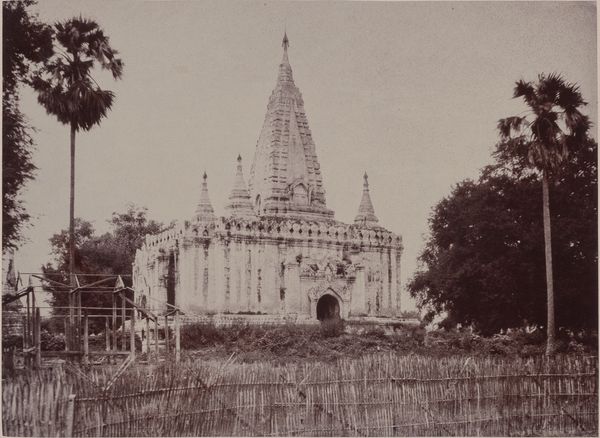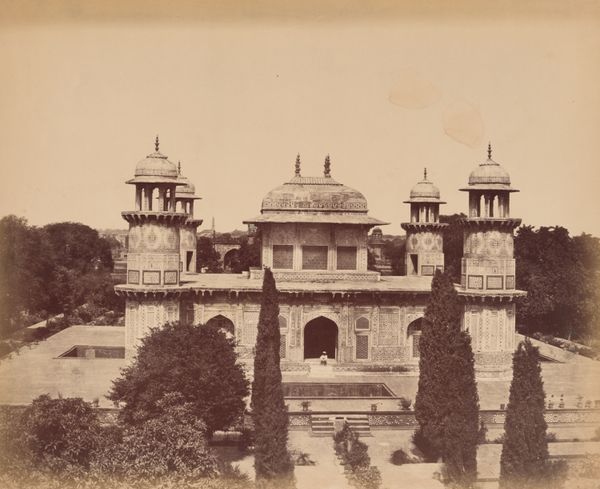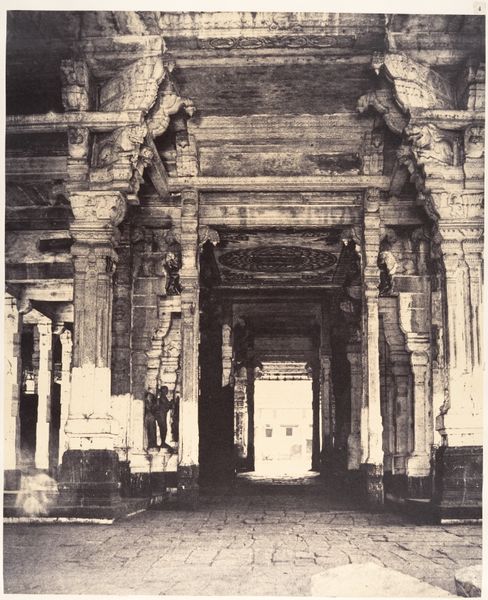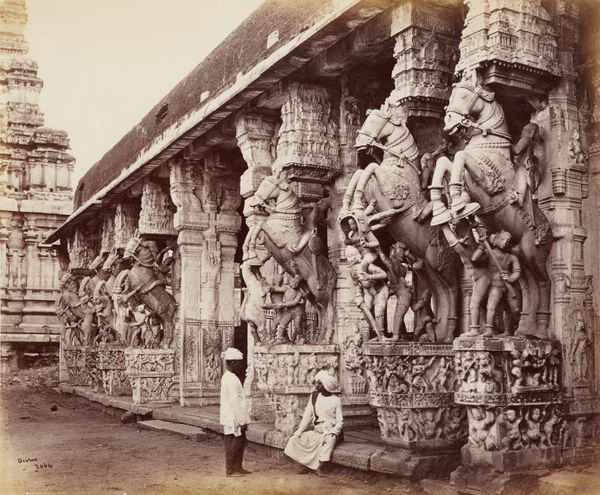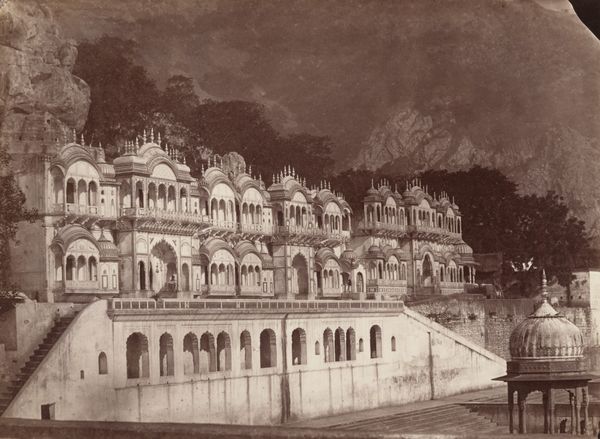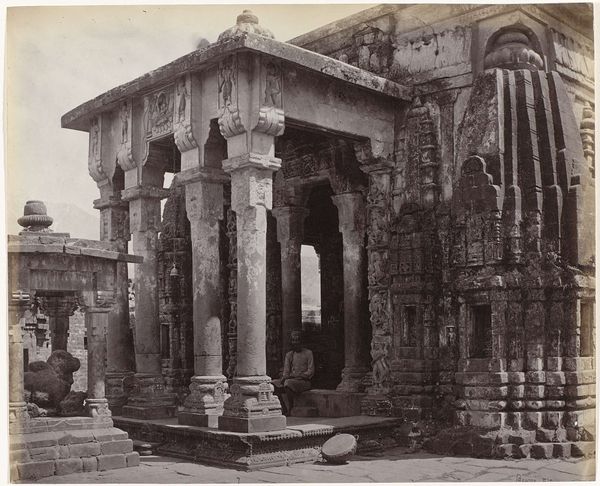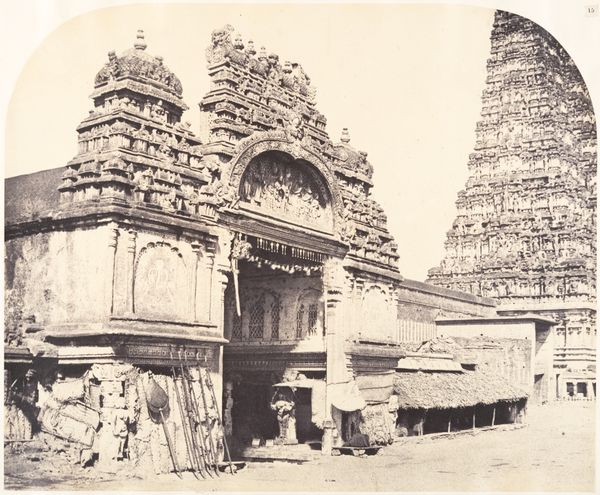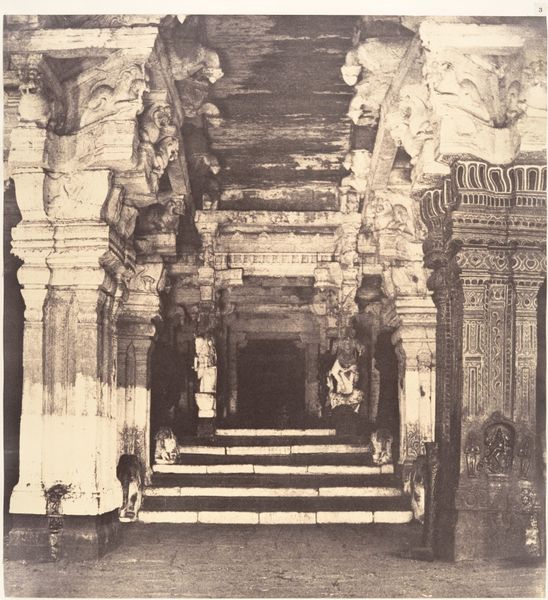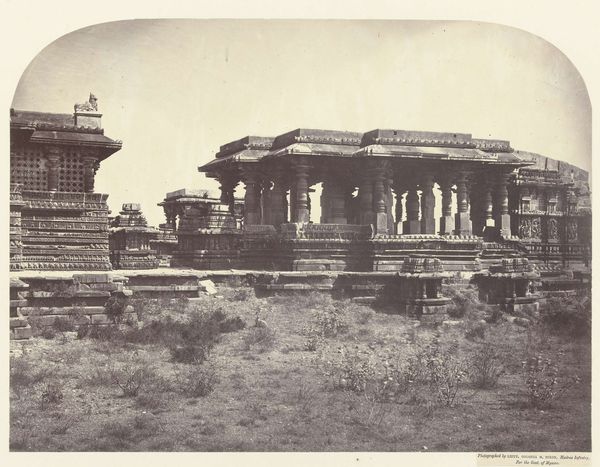
Amerapoora: East Door of the Maha-thugea-yan-tee Pagoda c. 1855
0:00
0:00
photography, architecture
#
architectural sketch
#
asian-art
#
photography
#
orientalism
#
architecture
Dimensions: sheet: 25.6 x 34.6 cm (10 1/16 x 13 5/8 in.)
Copyright: National Gallery of Art: CC0 1.0
Linnaeus Tripe created this photograph of the Maha-thugea-yan-tee Pagoda's east door in Amerapoora using the wet collodion process. Tripe was part of the British East India Company, and his photography served the dual purpose of artistic documentation and colonial record-keeping. The image presents the pagoda's architecture, emphasizing its intricate carvings and monumental scale. Made in Burma, now Myanmar, the photograph reflects the socio-political context of British colonial expansion in the mid-19th century. Tripe's work was intended to survey and document the region's cultural and architectural heritage and also served imperial interests. The photograph can be interpreted as a statement about British presence and influence in the region, portraying the pagoda, a symbol of Burmese culture, through the lens of a colonial power. Historians look to photographs such as this as essential documents, alongside textual archives, for understanding the complex relationships between colonizer and colonized, and the institutional structures that shaped their interactions.
Comments
No comments
Be the first to comment and join the conversation on the ultimate creative platform.





